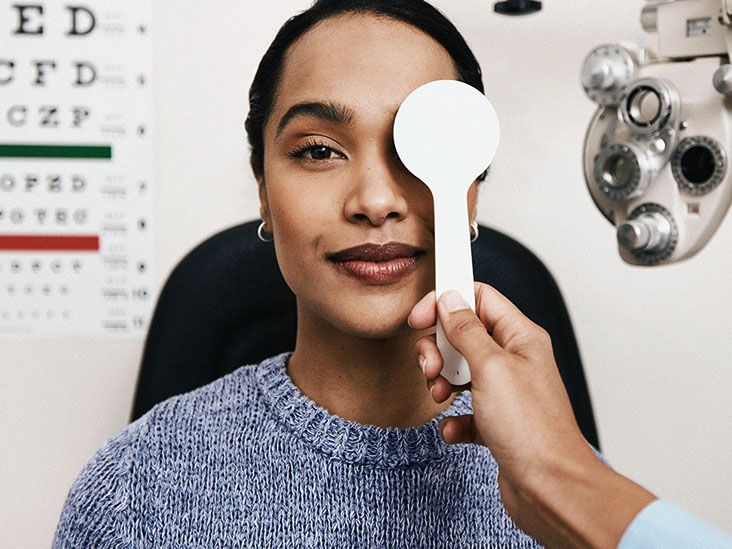Top Eye Doctors in Andalusia: Professional Vision Take Care Of Your Household
Top Eye Doctors in Andalusia: Professional Vision Take Care Of Your Household
Blog Article
Understanding the Different Vision Adjustment Procedures Available for Clearer View
In the realm of vision modification treatments, a wide range of options exist to address refractive errors and supply individuals with more clear view. From the extensively identified LASIK surgical procedure to much less intrusive procedures like PRK and implantable lenses, the area of ophthalmology offers a series of strategies customized to match various demands and preferences. Each procedure includes its own collection of factors to consider, benefits, and prospective threats. Comprehending the nuances of these vision adjustment techniques is critical for making educated choices regarding one's visual health. Allow's check out the details of these procedures and clarified the path to accomplishing improved vision clarity.
LASIK Surgical Procedure
LASIK surgery is a typical refractive treatment made use of to deal with vision issues such as farsightedness, nearsightedness, and astigmatism. This medical technique, which stands for Laser-Assisted in Situ Keratomileusis, intends to reshape the cornea to improve just how light is focused on the retina, ultimately enhancing vision quality.
Among the key benefits of LASIK surgical procedure is the quick enhancement in vision experienced by people. Numerous people notice a considerable improvement in their sight instantly after the treatment. Furthermore, many patients report marginal discomfort and discomfort during the surgical procedure and recuperation period. The recovery time for LASIK is relatively quick, with numerous people going back to their everyday tasks within a day or more post-operation. Overall, LASIK surgical procedure is a prominent selection for individuals seeking a long-lasting remedy for their vision troubles.
PRK Treatment

PRK is an appropriate option for people with thin corneas or those at a greater risk of eye injuries, as it does not include creating a corneal flap. The recovery process for PRK is slightly longer contrasted to LASIK, as the epithelium requires time to regenerate. Individuals may experience pain and blurred vision for a few days adhering to the procedure.
Regardless of the longer recovery time, PRK can generate excellent cause vision improvement, making it a beneficial alternative for those that might not be suitable candidates for LASIK surgery. - Andalusia Pediatrics
Implantable Lenses
Unlike PRK where the cornea is improved straight, implantable lenses use an additional method for fixing vision by placing artificial lenses inside the eye. This procedure is specifically advantageous for people with high levels of nearsightedness, farsightedness, or astigmatism who might not appropriate prospects for laser surgical treatments like LASIK or PRK.
Implantable lenses, likewise understood as phakic intraocular lenses, job by supplementing the eye's natural lens with a synthetic one. These lenses can be positioned before the natural lens (former chamber) or behind the iris and before the all-natural lens (posterior chamber) By adjusting the power and positioning of these lenses, eye doctors can efficiently fix refractive errors and improve aesthetic acuity.
One benefit of implantable lenses is that they are exchangeable and removable, providing versatility for future adjustments. Nonetheless, similar to any surgical procedure, there are threats included, such as infection or cataract development. Individuals thinking about implantable lenses ought to speak with an eye care expert to determine the most ideal option based on their individual needs and eye wellness.
Corneal Rings

The procedure for putting corneal rings is reasonably quick and minimally intrusive, frequently performed as an outpatient treatment. During the surgery, the ophthalmologist makes a small incision in the cornea and inserts the rings at a specific deepness. When in place, the rings assist to improve the cornea, supplying a smoother surface area click resources for light to enter the eye, which can result in clearer vision.
Corneal rings are thought about a reversible procedure, as they can be gotten rid of or changed if required. While they may not entirely remove the demand for glasses or contact lenses, corneal rings can dramatically boost vision quality and overall visual comfort for people with keratoconus or other corneal abnormalities.
Refractive Lens Exchange
Complying with the correction of corneal abnormalities with procedures like corneal rings, an additional vision correction strategy that can address refractive mistakes is Refractive Lens Exchange (RLE) RLE is a procedure that involves replacing the eye's natural lens with an artificial intraocular lens (IOL) to correct refractive errors such as farsightedness, presbyopia, and nearsightedness. This procedure is specifically helpful for individuals who may not appropriate candidates for procedures like LASIK or PRK because of variables such as slim corneas or high refractive errors.
RLE view it belongs to cataract surgery, as both involve getting rid of the eye's natural lens; however, in RLE, the lens is clear, not gloomy as in cataracts. The artificial lens implanted during RLE can be tailored to resolve the person's particular refractive mistake, giving clear vision at numerous distances. Recuperation time for RLE is fairly quick, and individuals can expect better vision not long after the procedure. Just like any kind of procedure, prospective threats and complications exist, so an extensive appointment with an eye care specialist is vital to figure out if RLE is the best vision improvement alternative.
Verdict

In the realm of vision adjustment procedures, a wide variety of options exist to address refractive errors and supply individuals with more clear sight.LASIK surgical treatment is a common refractive treatment made use of to deal with vision issues such as astigmatism, nearsightedness, and farsightedness.While also a typical refractive treatment, the PRK (Photorefractive Keratectomy) technique varies from LASIK surgical treatment in its approach to remedying vision issues.Following the adjustment of corneal irregularities with treatments like corneal rings, one more vision adjustment strategy that can attend to refractive errors is Refractive Lens Exchange (RLE) LASIK surgery, PRK treatment, implantable lenses, corneal rings, and refractive lens exchange are all choices that can deal with different vision concerns.
Report this page